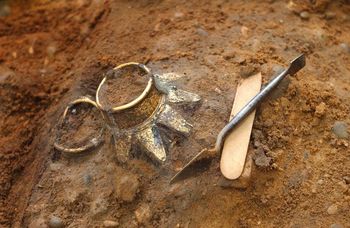How to use this guide
Why a GIS guide to good practice?
This document is designed specifically to provide guidance for individuals and organisations involved in the creation, maintenance, use and long-term preservation of GIS-based digital resources. It should be noted that although the overall emphasis is upon archaeological data, the information presented has much wider disciplinary implications.
As well as providing a source of useful generic information, the guide emphasises the processes of long-term preservation, archiving and effective data re-use. As a result, the importance of adhering to recognised standards and the recording of essential pieces of information about a given resource are dominant recurring themes throughout the discussions. The latter are designed to smooth the transition of the digital resource into an archive environment and to ensure that data can be re-located and re-used in the future.
It is important to realise that the current document is one component of a set of theme-specific guides, some of which contain much more detailed discussions of many of the topics outlined here, such as the integration of satellite images, and the precise formats and convention standards used within CAD layers. Although each guide, whether concerned with GIS, CAD, geophysical survey or remote sensing, is specifically designed to be self-contained, taken together they comprise a comprehensive, authoritative and highly complementary set of practical guidelines.
In outlining the aims of this document, it is equally important to state what the current guide does not cover. It does not aim to constitute an exhaustive introduction to the underlying origin, theory and technical implementation of GIS. Nor is it in any way a definitive and prescriptive manual on how ‘best’ to undertake GIS. Although the importance of standards and data frameworks will be rightly emphasised, the aim of the guide is to introduce practitioners to areas and issues where standards and frameworks already exist and may be applicable, and to identify the relevant sources of information that may be consulted. Whilst optimum pathways will often be identified, the guide does not rigidly advocate any single standard or narrow set of options. Instead, the concern here is more generic, with the aim of encouraging and developing the routine use of standards and data frameworks as a whole. In this sense it is important to realise that the present document constitutes a guide as opposed to a manual.
It is also important to note that this guide is concerned solely with archaeological data and GIS, whether derived from excavation, regional survey, archival research, intra-site analysis or any other archaeological endeavour. It is not concerned with the integration, archiving and accessing of data destined for study, maintenance and future re-use within CAD systems.
How to use this guide
Ideally any individual or institution involved with, or planning, a GIS-based exercise with the long-term aim of depositing the resultant data with a digital archive should read the guide in its entirety along with the complimentary sections that form the introduction to the entire set of Guides. In many cases, however, practitioners will only be dealing with one particular stage of the overall process and, to reflect this, the guide has been structured into clear thematic sections. Individuals are advised to read the sections relevant to the task at hand carefully.
As has been mentioned, throughout the sections are lists of information and metadata that it is critical to record for the purposes of producing an efficient, well-documented GIS database and for ensuring that the resources generated can be effectively archived and made available for re-use. This information is presented in a tabulated format within the main body of the sections but it is also crucially important to realise the cumulative nature of metadata. For example, if a practitioner’s immediate concern is with the integration of a number of paper maps into a GIS, using a digitiser to create a number of vector layers, they should take careful note of the following:
- Maps and Plans (Sources of data)
- The Vector data model(Data types: vector and raster models)
- Digitising (Sources of data)
- Structuring, organising and maintaining information (Data types: vector and raster models).
To assist this process of identifying relevant information and to ensure that adequate metadata is recorded, Appendix 2 contains a number of optimum pathways, like that illustrated above, which guide users through some of the more common GIS-related tasks and operations.
The thematic sections
To enable practitioners to target the individual sections most relevant to the particular task at hand, the aims of each section are summarised here:
- Introduction to the GIS guide provides a brief introduction to the role of GIS within archaeology, containing many pointers to important core references and fundamental texts. The aim of this section is to provide a contextual background to GIS in archaeology.
- The aim of Creating and using datasets is to discuss the principle types of primary spatial and attribute data, common sources of these data, and the processes by which they can be integrated within a GIS environment. This section also discusses the procedures and considerations involved in the effective structuring, organisation and maintenance of an active GIS database are discussed. In addition, suggestions for working with derived data are introduced. Section 2 also covers the importance of careful documentation. In effect what to record and when, in order to facilitate the convenient discovery and re-use of both active and archival GIS-based data resources. The concepts of documentation and metadata will be explored and discussed together with a working introduction to the Dublin Core metadata standard for resource discovery.
- Archiving GIS datasets contains a practical discussion on how to deposit and catalogue datasets. This includes a detailed introduction to the creation of metadata records and should serve as a general example of how to prepare GIS data for a digital archive.
A carefully selected set of bibliographic references is also provided to enable individuals to study topics in more detail. In addition an internal glossary is also presented.



